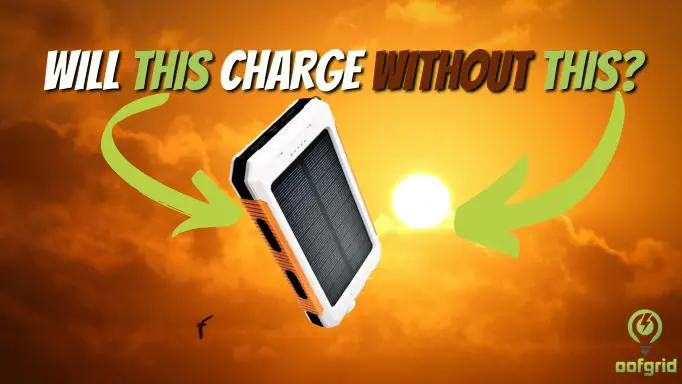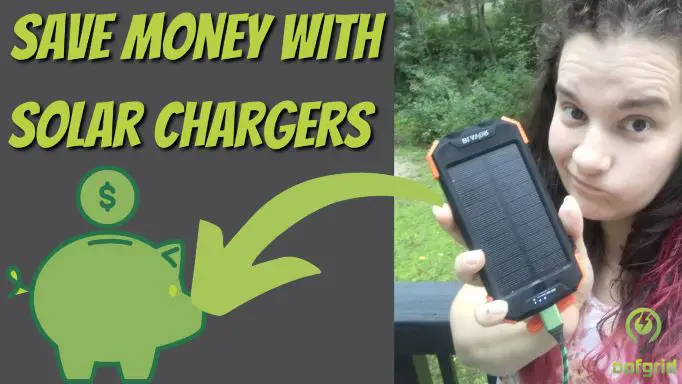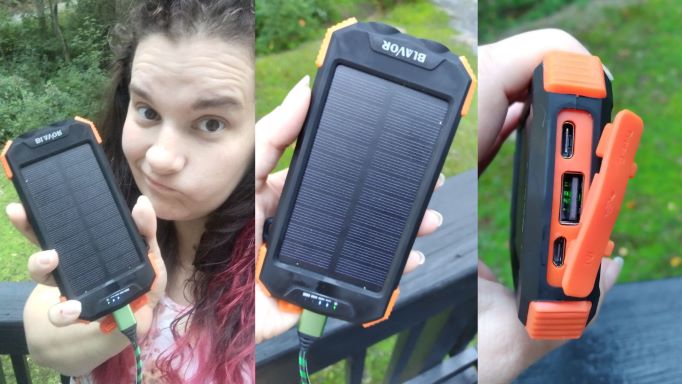A deep cycle battery is imperative in a lot of situations but using them in extreme conditions can mean that they don’t function as you would expect them to.
That said, there are some deep cycle batteries that will perform even when placed under the duress of cold temperatures so if you live in a cooler climate or are heading off on a cold-weather expedition, it is important to choose the right battery.
In this guide, we will be explaining the impact that cold temperatures can have on your deep cycle battery, what to do about it, and the best options to avoid problems.
Let’s jump in.
Contents
Understanding How Cold Affects Deep Cycle Batteries
Deep cycle batteries are one of the most effective ways of storing energy and they are also incredibly cost-effective.
However, while their very design makes this so, it also has a negative side in that these batteries are not as effective when they are exposed to cold temperatures.
In short, when the deep cycle battery is exposed to cold weather, the charge and discharge cycle is slowed.
Most experts would recommend that you protect your batteries by addressing this issue during maintenance checks.
If you have ever used your deep cycle batteries in both summer and winter, you will probably have noticed one key difference; during the summer the batteries tend to charge far more quickly.
This is because warm temperatures speed up the charge and discharge cycle. That said, it also means that the battery will drain much more quickly than normal too.
However, when you use your batteries in the winter, this process is slowed down meaning that it may take the battery much longer to charge than one might expect.
If you research deep cycle batteries, you will notice that almost all manufacturers place the same temperature recommendations on their equipment with 27ºc/80ºf being the norm.
It is at this temperature that these batteries are known to operate most efficiently.
Flooded Deep Cycle Batteries And Cold Weather
When you are using a flooded deep cycle battery, it is critical to perform regular specific gravity readings using a hydrometer.
This way, you will get a very clear idea of whether the battery is charged enough when you are in colder conditions.
Once you have your readings, you will be able to compare these to the manufacturer’s specs to ensure that you are getting the most out of the battery.
When you are taking the readings, you must subtract 0.004 from every ten degrees that the temperature falls below 80ºf.
The baseline reading for the electrolytes in these flooded batteries sits usually at 1.265 when it is fully charged.
Let’s say, for example, that you have a fully charged battery at a temperature of 50ºf, you would need to subtract 0.004 x 3 from 1.265 which would give you a corrected reading of 1.253 which means that your battery would only be operated at between 92% and 95% of its usual capacity.
Essentially, the colder the weather, the less capacity your flooded battery will have.
Another problem faced by people using a flooded deep cycle battery in cold weather is the possibility of freezing.
When we talk about freezing in relation to these batteries we are not talking about the operable temperatures but rather the freezing point of the electrolyte.
In a flooded deep cycle battery that is fully charged, it would take temperatures as low as -80ºf/-62ºc but when the battery starts to discharge, this freezing temperature rises, and a fully discharged flooded battery might freeze once it hits 20ºf/-7ºc.
For this reason, it is advisable to avoid allowing exposure to these kinds of temperatures.
Moreover, if the electrolyte freezes, then it is very likely that the battery will forever be rendered useless.
Other Types Of Deep Cycle Batteries And Cold Weather
There are several other types of deep cycle batteries that, while slightly different, do have a lot in common. These are the absorbed gas mat or AGM battery, gel cell batteries, and sealed lead acid or SLA batteries.
It may come as a surprise that, despite their popularity, there is not a lot of current information on the impact of cold weather on any of these batteries.
However, it is suggested that they will lose a seriously significant amount of charge when exposed to the cold. One study found that this could be as much as 76% when exposed to freezing temperatures.
However, unlike flooded deep cycle batteries, at this temperature, these types of batteries will regain their full potential once they are warmed back up.
The only exception to this is if the batteries become physically frozen but this doesn’t happen until the temperature drops very significantly. You’d need to get down to about -75ºf for this to happen.
If you are using this type of battery, most manufacturers would recommend that you avoid allowing it to be exposed to anything lower than 32ºf and certainly do not charge it if it falls below this.
However, if you live somewhere that cold weather like this is commonplace, you may need to use the battery in any case. In this instance, you will simply need to be willing to replace the battery more frequently than usual.
This could be as often as every year, but the good news is that these batteries are not expensive.
What Are The Best Deep Cycle Batteries For Cold Weather?
There isn’t any type of deep cycle battery that will function perfectly when exposed to cold temperatures.
However, lithium-ion batteries do tend to fare far better than other types.
They will perform a lot better in many aspects and since they are so readily available, they are certainly worth considering if you live in or will be spending time in a colder climate.
That said, you must expect to lose a little capacity when the mercury drops but compared to others, this is minimal. When exposed to temperatures as low as 32ºf/0ºc, a lithium-ion deep cycle battery will only lose around 17%.
You could push it even further and take the temperature as low as -4ºf/-20ºc and still expect to have at least 70% of the original capacity.
If you need something more reliable, there is no doubt that lithium-ion is the way to go.
But it isn’t only the way that these batteries perform in extreme conditions that make them a cut above the rest.
The lithium-ion battery is far more lightweight.
If you’re traveling in an RV in cold weather or are out in the middle of nowhere enjoying time on your boat, or anything else, the chances are that you will already have a lot of equipment and the last thing you need is a cumbersome battery weighing you down.
These modern deep cycle batteries also benefit from the ability to charge far more quickly even when the temperature is lower which is something that other batteries cannot lay claim to.
Moreover, they are much more versatile and can be mounted in any way, including upside down.
They’re great if you are looking for something long-lasting. Compared to other types of deep cycle batteries, a lithium-ion may last up to five times longer.
They are a little more expensive, but when you consider that you won’t need to invest as frequently even when you are using them in cold weather, this is an investment worth making.
It is also worth keeping in mind that these batteries require no maintenance which when compared to the work you would need to put into a flooded deep cycle battery in the cold, is a massive plus point.
As a general rule, these lithium-ion batteries will safely charge and discharge in temperatures that range between -40ºf and 60ºf although it is worth checking with the manufacturer as there may be exceptions to this rule.
Where Can I Buy Lithium Ion Deep Cycle Batteries?
The first lithium-ion battery prototype was made in the mid 1980s making them one of the newer types of batteries. However, thanks to their superior performance, these batteries have become very popular, very quickly.
You will find various types of lithium-ion batteries in a whole array of devices and deep cycles LIs are seemingly everywhere.
This means that getting your hands on one isn’t difficult and there are a lot of manufacturers vying for your attention.
One of the most notable producers of this type of battery is Dakota whose products are being used in locations like the Arctic Circle where the average summer temperature is just 50ºf/10ºc and in winter, this plummets down to -22ºf to -31ºf.
If the batteries prove successful in these temperatures, then that is convincing enough for us.
That said, as with most other modern purchases, lithium-ion deep cycle batteries can be purchased on Amazon and there are a plethora of choices.
Whether you are looking for something that can face thousands of cycles like this one from TalentCell or accessories to go with your battery, you’ll find everything you need on websites like this.
Conclusion
If you have ever tried to use your deep cycle battery in cold weather they ou will have noticed that it just doesn’t perform as well as when you use it at the ‘sweet spot’ temperature of 80ºf.
But that doesn’t mean that you can’t use a deep cycle battery in extreme conditions, it simply means that you’ll need to choose one that is better designed to handle the stress.
While some batteries will really struggle when the temperature drops, lithium-ion deep cycle batteries will keep on performing.
They will lose a little capacity but compared to other types, this is incredibly low.
- What Size Generator to Run an Air Conditioner
- What Happens to Solar Power When Batteries Are Full?
- Can I Leave a Solar Trickle Charger on All the Time?
- Ozone Generator for Water Purification
- Do Solar Power Phone Chargers Work? | Are They Worth it?
[Ezoic account verification #[187549]”






